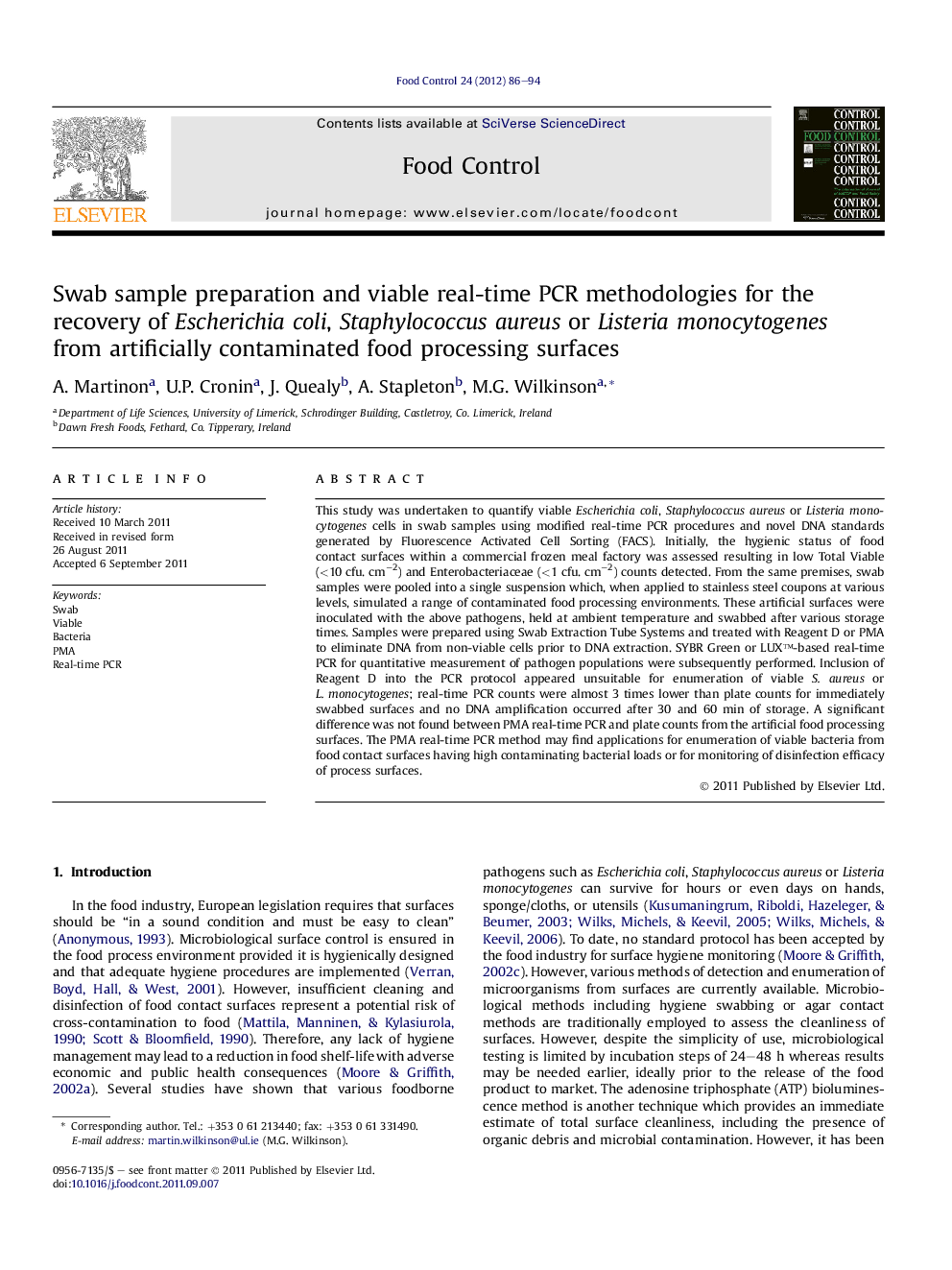| Article ID | Journal | Published Year | Pages | File Type |
|---|---|---|---|---|
| 6394443 | Food Control | 2012 | 9 Pages |
This study was undertaken to quantify viable Escherichia coli, Staphylococcus aureus or Listeria monocytogenes cells in swab samples using modified real-time PCR procedures and novel DNA standards generated by Fluorescence Activated Cell Sorting (FACS). Initially, the hygienic status of food contact surfaces within a commercial frozen meal factory was assessed resulting in low Total Viable (<10 cfu. cmâ2) and Enterobacteriaceae (<1 cfu. cmâ2) counts detected. From the same premises, swab samples were pooled into a single suspension which, when applied to stainless steel coupons at various levels, simulated a range of contaminated food processing environments. These artificial surfaces were inoculated with the above pathogens, held at ambient temperature and swabbed after various storage times. Samples were prepared using Swab Extraction Tube Systems and treated with Reagent D or PMA to eliminate DNA from non-viable cells prior to DNA extraction. SYBR Green or LUXâ¢-based real-time PCR for quantitative measurement of pathogen populations were subsequently performed. Inclusion of Reagent D into the PCR protocol appeared unsuitable for enumeration of viable S. aureus or L. monocytogenes; real-time PCR counts were almost 3 times lower than plate counts for immediately swabbed surfaces and no DNA amplification occurred after 30 and 60 min of storage. A significant difference was not found between PMA real-time PCR and plate counts from the artificial food processing surfaces. The PMA real-time PCR method may find applications for enumeration of viable bacteria from food contact surfaces having high contaminating bacterial loads or for monitoring of disinfection efficacy of process surfaces.
⺠We quantified E. coli, S. aureus or L. monocytogenes using modified PCR procedures to exclude dead cells. ⺠Artificial stainless steel surfaces were inoculated with the pathogens and quantified using PCR with added PMA. ⺠Novel PCR quantification DNA standards were generated by Fluorescence Activated Cell Sorting. ⺠A significant difference was not found between PCR with PMA and viable plate counts.
